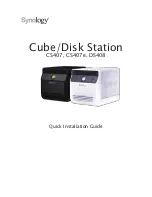
Notes:
a. If the server stops during testing and you cannot continue, restart the server
and try running the diagnostic programs again.
b. The keyboard and mouse (pointing device) tests assume that a keyboard
and mouse are attached to the server.
c. If you run the diagnostic programs with no mouse attached to the server,
you will not be able to navigate between test categories using the Next Cat
and Prev Cat buttons. All other functions provided by mouse-selectable
buttons are also available using the function keys.
d. You can run the USB interface test and the USB external loopback test only
if there are no USB devices attached.
e. You can view server configuration information (such as system configuration,
memory contents, interrupt request (IRQ) use, direct memory access (DMA)
use, device drivers, and so on) by selecting Hardware Info from the top of
the screen.
When the tests have completed, you can view the Test Log by selecting Utility from
the top of the screen.
If the hardware checks out OK but the problem persists during normal server
operations, a software error might be the cause. If you suspect a software problem,
refer to the information that comes with the software package.
Viewing the test log
The test log will not contain any information until after the diagnostic program has
run.
Note: If you already are running the diagnostic programs, begin with step 3
To view the test log:
1. Turn on the server and watch the screen.
If the server is on, shut down the operating system and restart the server.
2. When the message
F2 for Diagnostics
appears, press F2.
If a power-on password or administrator password is set, the server prompts
you for it. Type in the appropriate password; then, press Enter.
3. When the Diagnostic Programs screen appears, select Utility from the top of
the screen.
4. Select View Test Log from the list that appears; then, follow the instructions on
the screen.
The system maintains the test-log data while the server is powered on. When
you turn off the power to the server, the test log is cleared.
Diagnostic error message tables
For descriptions of the error messages that might appear when you run the
diagnostic programs, see “Diagnostic error codes” on page 103 If diagnostic error
messages appear that are not listed in those tables, make sure that the server has
the latest levels of BIOS, Advanced System Management Processor, ServeRAID,
and diagnostics microcode installed.
Diagnostics
15
Summary of Contents for 8682 - Eserver xSeries 350
Page 1: ...IBM xSeries 350 Type 8682 Hardware Maintenance Manual ERserver ...
Page 2: ......
Page 3: ...IBM xSeries 350 Type 8682 Hardware Maintenance Manual ERserver ...
Page 6: ...iv IBM xSeries 350 Type 8682 Hardware Maintenance Manual ...
Page 10: ...viii IBM xSeries 350 Type 8682 Hardware Maintenance Manual ...
Page 42: ...32 IBM xSeries 350 Type 8682 Hardware Maintenance Manual ...
Page 106: ...96 IBM xSeries 350 Type 8682 Hardware Maintenance Manual ...
Page 147: ...Related service information 137 ...
Page 148: ...138 IBM xSeries 350 Type 8682 Hardware Maintenance Manual ...
Page 149: ...Related service information 139 ...
Page 150: ...140 IBM xSeries 350 Type 8682 Hardware Maintenance Manual ...
Page 151: ...Related service information 141 ...
Page 152: ...142 IBM xSeries 350 Type 8682 Hardware Maintenance Manual ...
Page 153: ...Related service information 143 ...
Page 163: ...Related service information 153 ...
Page 164: ...154 IBM xSeries 350 Type 8682 Hardware Maintenance Manual ...
Page 165: ...Related service information 155 ...
Page 166: ...156 IBM xSeries 350 Type 8682 Hardware Maintenance Manual ...
Page 172: ...162 IBM xSeries 350 Type 8682 Hardware Maintenance Manual ...
Page 173: ......
Page 174: ... Part Number 24P2905 File Number Printed in U S A 1P P N 24P2905 ...
















































